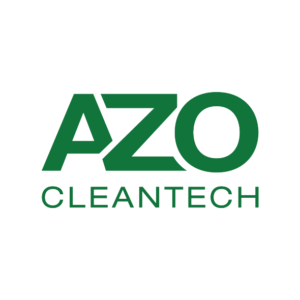© 2020 Aeternum Innovations
Home » News
News
 Improving air quality on Queen Elizabeth Olympic Park
Improving air quality on Queen Elizabeth Olympic Park ‘School street’ traffic restrictions in Olympic park credited for 45 per cent reduction in soot pollution
‘School street’ traffic restrictions in Olympic park credited for 45 per cent reduction in soot pollution Aeternum Release New Data That Shows Traffic Pollution Rose During COP26
Aeternum Release New Data That Shows Traffic Pollution Rose During COP26 Aeternum sensor network featured on BBC North West Tonight
Aeternum sensor network featured on BBC North West Tonight Meet Dr Paul Carter, CEO and Founder at Aeternum: A Provider Of Sensors Designed To Accurately Monitor Air Quality
Meet Dr Paul Carter, CEO and Founder at Aeternum: A Provider Of Sensors Designed To Accurately Monitor Air Quality NO2 increased by 30% during COP26
NO2 increased by 30% during COP26 New Data Shows Traffic Pollution Level Rose by Nearly a Third in Glasgow During COP26
New Data Shows Traffic Pollution Level Rose by Nearly a Third in Glasgow During COP26 Cop26: Traffic pollution levels rose by nearly a third in Glasgow during Cop26
Cop26: Traffic pollution levels rose by nearly a third in Glasgow during Cop26 Glasgow traffic pollution levels rose by nearly a third during COP26 summit
Glasgow traffic pollution levels rose by nearly a third during COP26 summit New data shows traffic pollution level rose by nearly a third in Glasgow during COP26
New data shows traffic pollution level rose by nearly a third in Glasgow during COP26
‘School street’ traffic restrictions in Olympic park credited for 45 per cent reduction in soot pollution

Banning parents from dropping off their children by car resulted in a big drop in toxic particulates at a primary school in the Olympic park, according to new research.
A study into the impact of the “school street” restrictions at Mossbourne Riverside Academy – which ban vehicles outside the school gates at the start and end of classes – found there had been a 45 per cent reduction in PM2.5 soot particulates in the morning.
Aeternum sensor network featured on BBC North West Tonight
 Aeternum and University of Liverpool have deployed a network of air quality sensors throughout the city of Liverpool. The University of Liverpool discusses the deployment with the BBC along with the benefits and importance of the sensor data collected.
Aeternum and University of Liverpool have deployed a network of air quality sensors throughout the city of Liverpool. The University of Liverpool discusses the deployment with the BBC along with the benefits and importance of the sensor data collected.
Aeternum’s outdoor sensors utilize unplugged, sustainable power sources such as solar which is used in our most current applications. However, the sensors will also run from mix of solar, wind and a patented RF energy harvesting method that uses rectenna technology to convert ambient energy to usable power. This is all designed to provide a simple solution for communities to mitigate the adverse effects of pollution and take steps to improve air quality in an informed way.
We believe the current technology and systems in place to monitor pollution are outdated and inadequate. By providing a complete end-to-end solution, connected by secure wireless networks, we hope to empower communities to make the changes necessary to improve people’s health.

How did you come up with the idea for the company?
The original idea behind Aeternum came from our work completed alongside the University of Liverpool, in which we worked to research RF energy harvesting technology and its potential uses in commercial outdoor sensors. Following the successful development of this now patented technology, we worked with the University to deploy a city-wide air quality sensor network across Liverpool.
This R&D process revealed two things about the current ecosystem of pollution monitoring. Firstly, current sensor technology is often very costly and relies on a complex and labor-intensive process. Through solar energy, we have developed sensors that can be powered independently, without connection to the mains or constant battery maintenance. The company name Aeternum, meaning “forever” in Latin, was chosen because the development of this technology allows these sensors, in theory, to be powered forever. Second, the DEFRA pollution sensor ecosystem set up across the country only provides a snapshot of the air quality in each specific location.
The DEFRA sensors are typically very large and therefore fixed to a given area. However, as with many things, air quality and pollution levels can vary massively and change depending on a variety of factors both over time, but also specific to any given area. Our aim in starting Aeternum was to come up with a way of being able to deploy accurate air quality monitoring stations that are also mobile.
Our sensors can be moved quickly and easily to provide measurements across a wider area, and to enable a more accurate understanding of those factors which impact air quality. Only from here can robust policy responses be built.
How has the company evolved during the pandemic?
Aeternum as a company has really taken off during the pandemic. Whilst our research in cooperation with University of Liverpool began back in 2017, we have made major developments in the production of our innovative sensors, and with partnerships, working alongside community organisations. In many ways, the pandemic has given people a greater sense of stillness in the places where they reside.
For this reason, more communities have become aware of air quality and the adverse effects of pollution. The spread of COVID-19 has also brought greater attention to respiratory illnesses, highlighting the need for clean and safe air quality where we live and breathe. With the urgency of the climate crisis ever-increasing, and our relationship to the urban environments with which we live currently in flux, Aeternum has found its place empowering communities to better understand their lived environment.
What can we hope to see from Aeternum in the future?
The World Health Organisation (WHO) has reported that more than 80% of people living in urban areas that monitor air pollution are exposed to air quality levels that exceed its guideline limits. Ironically enough, data from Aeternum’s sensors recently showed that the upsurge in city traffic and congestion during COP26 led to Nitrogen Dioxide levels that were to 93% higher than WHO Air Quality Guidelines.
This is not to say to undermine the incredible importance of the conference. It is merely to say that an awareness of air pollution levels, and the impact of different community-wide events, is important from a public health perspective. This is something that can only be achieved by broader data monitoring systems.
In this way, our vision for Aeternum is to empower communities through data. Pollution monitoring should be standard for any area wishing to improve air quality and ultimately public health. We hope to continue to partner with community organisations to make this a reality. We have already partnered with Class of Your Own Limited (COYO), an award-winning consultancy specialising in STEM education for the digitally built environment.
Through this partnership, we were able to monitor the M8 motorway during COP26 and provide an accurate picture of the changes in pollution. We hope to pursue further initiatives of this sort in the future, widening the reach of pollution monitoring, and the insights it can provide, throughout the UK, and beyond.

The data follows a similar trend to two air quality sensors installed by the UK’s Government’s Department for Environment, Food and Rural Affairs (DEFRA) around Glasgow during the same time period, which recorded a peak in nitrogen dioxide during the conference

Nitrogen oxides are produced in combustion processes, and road traffic is the principal outdoor source of nitrogen dioxide, suggesting traffic pollution caused the increase in nitrogen dioxide in the air during the two weeks of the conference.
Higher levels of nitrogen oxide can contribute to health issues, particularly among young children, asthmatics and adults with heart and respiratory disorders.
Paul Carter, founder of Aeternum, said: “Our sensor data clearly shows an increase in average nitrogen dioxide levels under Glasgow’s Kingston Bridge during Cop26, compared to the month prior to the event.
“When we compared our findings with those of DEFRAs monitoring stations, we identified a general trend that average NO2 levels increased during the event and later fell to almost its previous levels.”
He continued: “There has been much speculation about the potential environmental impact of holding such a large global event that saw many delegates arriving and departing via modes of transport that are harmful to the environment.
“Our sensor is positioned along a main walkway leading to the SEC, enabling us to gather a clear picture of the air many attendees were breathing during the conference. By accurately monitoring hyperlocal air quality, local councils and communities can gather a clear, real-time picture of the impact of pollutants in the air local people are breathing – and make informed decisions about how best to manage them.”
Meet Dr Paul Carter, CEO and Founder at Aeternum: A Provider Of Sensors Designed To Accurately Monitor Air Quality
 Aeternum is a company that was set up to help communities make better and more informed decisions about the quality of the air that people breathe. We provide the monitoring tools which inform communities about the air quality of a given area via our specially designed pollution sensors. We also provide a data analysis portal from which assessments regarding the severity of pollution levels can be made.
Aeternum is a company that was set up to help communities make better and more informed decisions about the quality of the air that people breathe. We provide the monitoring tools which inform communities about the air quality of a given area via our specially designed pollution sensors. We also provide a data analysis portal from which assessments regarding the severity of pollution levels can be made.
Aeternum’s outdoor sensors utilize unplugged, sustainable power sources such as solar which is used in our most current applications. However, the sensors will also run from mix of solar, wind and a patented RF energy harvesting method that uses rectenna technology to convert ambient energy to usable power. This is all designed to provide a simple solution for communities to mitigate the adverse effects of pollution and take steps to improve air quality in an informed way.
We believe the current technology and systems in place to monitor pollution are outdated and inadequate. By providing a complete end-to-end solution, connected by secure wireless networks, we hope to empower communities to make the changes necessary to improve people’s health.

How did you come up with the idea for the company?
The original idea behind Aeternum came from our work completed alongside the University of Liverpool, in which we worked to research RF energy harvesting technology and its potential uses in commercial outdoor sensors. Following the successful development of this now patented technology, we worked with the University to deploy a city-wide air quality sensor network across Liverpool.
This R&D process revealed two things about the current ecosystem of pollution monitoring. Firstly, current sensor technology is often very costly and relies on a complex and labor-intensive process. Through solar energy, we have developed sensors that can be powered independently, without connection to the mains or constant battery maintenance. The company name Aeternum, meaning “forever” in Latin, was chosen because the development of this technology allows these sensors, in theory, to be powered forever. Second, the DEFRA pollution sensor ecosystem set up across the country only provides a snapshot of the air quality in each specific location.
The DEFRA sensors are typically very large and therefore fixed to a given area. However, as with many things, air quality and pollution levels can vary massively and change depending on a variety of factors both over time, but also specific to any given area. Our aim in starting Aeternum was to come up with a way of being able to deploy accurate air quality monitoring stations that are also mobile.
Our sensors can be moved quickly and easily to provide measurements across a wider area, and to enable a more accurate understanding of those factors which impact air quality. Only from here can robust policy responses be built.
How has the company evolved during the pandemic?
Aeternum as a company has really taken off during the pandemic. Whilst our research in cooperation with University of Liverpool began back in 2017, we have made major developments in the production of our innovative sensors, and with partnerships, working alongside community organisations. In many ways, the pandemic has given people a greater sense of stillness in the places where they reside.
For this reason, more communities have become aware of air quality and the adverse effects of pollution. The spread of COVID-19 has also brought greater attention to respiratory illnesses, highlighting the need for clean and safe air quality where we live and breathe. With the urgency of the climate crisis ever-increasing, and our relationship to the urban environments with which we live currently in flux, Aeternum has found its place empowering communities to better understand their lived environment.
What can we hope to see from Aeternum in the future?
The World Health Organisation (WHO) has reported that more than 80% of people living in urban areas that monitor air pollution are exposed to air quality levels that exceed its guideline limits. Ironically enough, data from Aeternum’s sensors recently showed that the upsurge in city traffic and congestion during COP26 led to Nitrogen Dioxide levels that were to 93% higher than WHO Air Quality Guidelines.
This is not to say to undermine the incredible importance of the conference. It is merely to say that an awareness of air pollution levels, and the impact of different community-wide events, is important from a public health perspective. This is something that can only be achieved by broader data monitoring systems.
In this way, our vision for Aeternum is to empower communities through data. Pollution monitoring should be standard for any area wishing to improve air quality and ultimately public health. We hope to continue to partner with community organisations to make this a reality. We have already partnered with Class of Your Own Limited (COYO), an award-winning consultancy specialising in STEM education for the digitally built environment.
Through this partnership, we were able to monitor the M8 motorway during COP26 and provide an accurate picture of the changes in pollution. We hope to pursue further initiatives of this sort in the future, widening the reach of pollution monitoring, and the insights it can provide, throughout the UK, and beyond.

The data follows a similar trend to two air quality sensors installed by the UK’s Government’s Department for Environment, Food and Rural Affairs (DEFRA) around Glasgow during the same time period, which recorded a peak in nitrogen dioxide during the conference

Nitrogen oxides are produced in combustion processes, and road traffic is the principal outdoor source of nitrogen dioxide, suggesting traffic pollution caused the increase in nitrogen dioxide in the air during the two weeks of the conference.
Higher levels of nitrogen oxide can contribute to health issues, particularly among young children, asthmatics and adults with heart and respiratory disorders.
Paul Carter, founder of Aeternum, said: “Our sensor data clearly shows an increase in average nitrogen dioxide levels under Glasgow’s Kingston Bridge during Cop26, compared to the month prior to the event.
“When we compared our findings with those of DEFRAs monitoring stations, we identified a general trend that average NO2 levels increased during the event and later fell to almost its previous levels.”
He continued: “There has been much speculation about the potential environmental impact of holding such a large global event that saw many delegates arriving and departing via modes of transport that are harmful to the environment.
“Our sensor is positioned along a main walkway leading to the SEC, enabling us to gather a clear picture of the air many attendees were breathing during the conference. By accurately monitoring hyperlocal air quality, local councils and communities can gather a clear, real-time picture of the impact of pollutants in the air local people are breathing – and make informed decisions about how best to manage them.”
©2023 Aeternum Innovations Limited
Questions? Contact us at info@aeternum.co









 In this episode of the Queen Elizabeth Olympic Park Podcast, we find out how research has shown a drop in nitrogen dioxide and other dangerous particulates after a School Street was introduced at Mossbourne Riverside Academy on Queen Elizabeth Olympic Park.
In this episode of the Queen Elizabeth Olympic Park Podcast, we find out how research has shown a drop in nitrogen dioxide and other dangerous particulates after a School Street was introduced at Mossbourne Riverside Academy on Queen Elizabeth Olympic Park.
